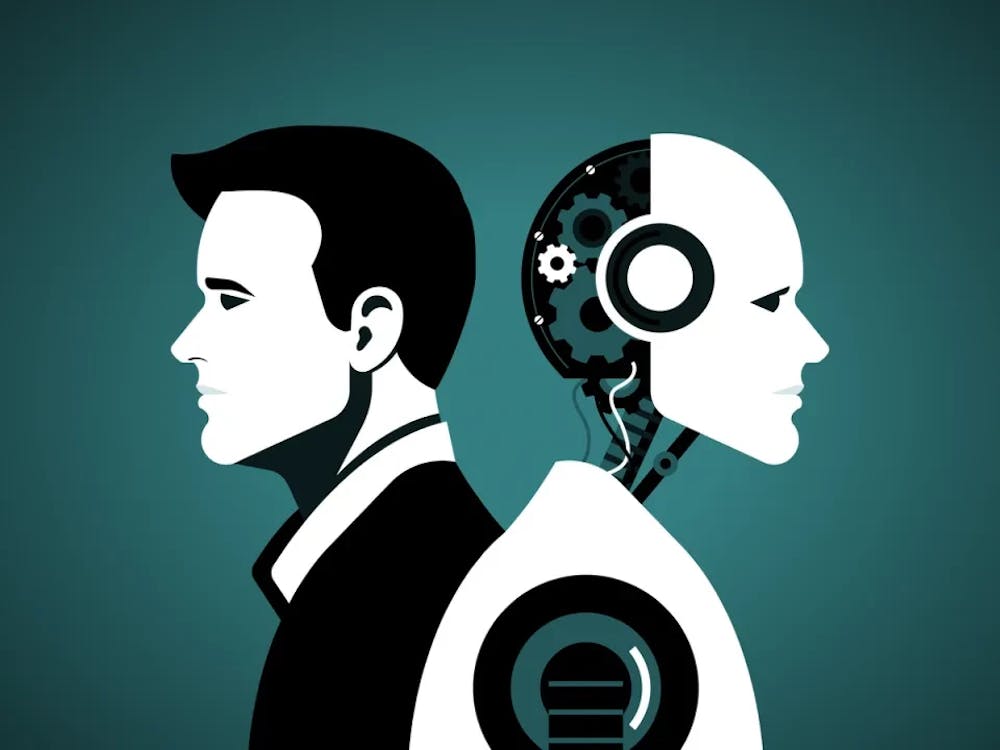As someone who plans on pursuing a fine arts career, the advancement of AI is always at the forefront of my mind. I often find myself wondering: will the social attitude toward artists shift? When will job security become one of my problems because of rapidly developing technology?
How should I construct my journey to higher education if there is no certainty that my desired profession will even be ruled by human minds by the time I get there? How replaceable am I?
As if a worldwide witch hunt is crossing over us, artists everywhere are already falling victim to AI. If screenwriters, lyricists, authors, and journalists aren’t using it, they are being replaced with it.
It isn’t just creatives being affected by it: if accountants, teachers, lawyers, and computer programmers aren’t using it, they are being accused of using it to become more successful at their jobs.
According to Forbes, it has already “set its sights on 300 million jobs around the globe…” which is 9.1% of all the world’s jobs. As shown by the World Economic Forum’s “The Future of Jobs Report 2020, AI is revving to replace 85 million jobs worldwide by 2025.
Before we were ever aware of the threat it posed, this advancement in technology has wreaked havoc on the state of national job security, consequently causing many to think it’s only a matter of time before humans aren’t needed for even the most creative and physically engaging of fields. However as hard it knocks at our door, it is destined to fail, and it was a five-year-old who taught me as much.
To complete part of a homework assignment for a playwriting class, I was sitting bitterly in Rittenhouse Square a few weeks ago, the chill of early January nipping at my cheeks and nose. Bundling my jacket closer to me, I peered around as my assignment instructed, and wrote down my observations.
Two older women held hands as they shuffled down the walkways. A dozen dogs of different breeds and sizes shuffled past me. A group of high schoolers were having a birthday celebration twenty yards behind me.
A young boy who couldn’t have been over the age of five scribbled on a piece of construction paper on the bench opposite me as his father watched. When the boy and his father started to walk to their next destination a few minutes later, the child’s paper was swept up in the wind as he was hauled away from Rittenhouse crying.
After I too became fed up with the cold, I started to make my way home and came across the same boy’s drawing plastered to the rain-soaked concrete. Picking it up, the scribbly image of what was likely the boy’s family, his parents, and siblings' blobs of blues and greens, swam across my vision.
Despite the messiness of it, it was then that I realized the reason parents kept their kids’ drawings. Thinking back to what I was puzzling over the night before as I researched colleges and creative writing undergraduate degrees, I shook my head at myself. How could I ever worry about my artistic passions being overtaken by technology when technology is missing the most crucial part of it all?
Though artificial intelligence and technology are capable of many things, both simply aren’t capable of taking over art as many suspect they might because art is like nothing else. When we think back on what life might have been like centuries ago in various parts of the world, what do we perplexed over?
Enjoy what you're reading?
Signup for our newsletter
When we are in history classes and studying ancient cultures, why do we admire them? When we notice the beauties of our cities and towns, built decades and sometimes centuries before we were ever born, why do we become impassioned? The answer is, and will always be, art.
We think of architecture and music, of dance and theater, of their writings and paintings, of all things human-made with such reverence because they are what make our very beings up. They string together the fabric of our culture. It is impossible to erase things that have always been permanent.
AI will never achieve the title of a creative equivalent because humanity is at the heart of art. It is inconceivable, however many modifications are made to technology, for a thing that doesn’t experience life organically like we do to overrun us.
Centuries from now, a new generation will look at the children of this generation’s drawings like the one I stumbled upon at Rittenhouse Square and will be awed as we are. They will see our scribbles as an ancient language that tells the story of who we are and how we came to be.
They will learn through our mismatched blobs that art is essential, that art is eternal, and that art is art because it is humanity personified.




